The rarest of the rare
by Wallace Wyss –
Already the Porsche Speedster, with only a little over 4,000 made from ’55 through ’58, is a hot collectable. But this article is about the crème-de-le-crème Speedster, the Porsche 356 Speedster Carrera of which less than 160 were made.
The engine got its name from Porsche’s participation in the Carrera Panamericana road races in Mexico.
The first time they tested the engine in a race was in 1954 when they installed an experimental engine into a 356 coupe with a chop top and a one piece windshield to replace the dual paned one.
With Helmut Polensky as driver Herbet Linge as navigator, the car took first in the 3,197 mile Leige-Rome-Leige Rally, at that time the toughest rally in Europe.
In late 1955 the first production Porsche 356 Speedster Carrera–called the 1500GS—rolled out. This was powered by a detuned version of the engine that powered the mid-engined Porsche 550 race car.
The Type 547/1 Flat-4 engine boasted a lot of features not on the regular pushrod Porsche engine: two spark plugs per cylinder, four overhead camshafts, large valves and aluminum pistons, cylinders and cylinder heads.
The crankshaft rolled in roller bearings and the engine used dry-sump lubrication supplied by an external tank. The 1500 cc engine produced in the area of 100 to 110 bhp, roughly twice the power of the 1500 push-rod flat four.
It took two weeks just to assemble a four-cam engine. And the parts were more expensive to make. So, justifiably, Porsche marked up the price of the 1500GS close to 30% more than the standard push-rod Speedster.
Now Porsche had cars built just for racing, like the 550, but the raison d’etre for the Speedster was to have a car you could drive around during the week on the highways but on weekends take the windscreen off, put on a racing windscreen, and race.
But another reason the Porsche 356 Speedster Carrera got the Carrera 4-cam engine was that FIA rules insisted 100 of a given car be made in order for it to be accepted in the Grand Touring category. And these were a lot heavier than the 550 race cars so they wouldn’t have had a chance in the prototype class.
So later in its production cycle, Porsche began offering racing options. In 1957 the option called “GT” gave you 10 additional horsepower. Order that package and you also got an 80-liter fuel tank and 60 mm front racing brakes.
According to the RM auction company, who had one for auction two years ago, “The 356 A Carrera GS Speedsters are nearly identical in appearance to their pushrod-engined sisters, but they could be spotted by the knowledgeable for their larger-diameter exhaust pipes, an 8,000 rpm tachometer, a couple of extra dashboard ignition control switches, somewhat wider wheels, a slightly lower rear ride height (the Carrera motor with its external oil tank was a bit heavier than the pushrod engine), and, of course, the telltale gold “Carrera” script on their front fenders and rear body panel.”
The car, admittedly, was a chore to drive on the street. The engine bogged and coughed and stuttered until you got above 4,000 rpm and even then you had to wind it out. It was happy up there at the higher rev ranges.
The spark plugs were so hard to reach the joke at the time was you had to be an 8-armed octopus in order to change the plugs. Conversely Porsche warned owners not to exceed 6500 rpm for long periods, intimating that engine wear and fuel consumption went up, but it was OK to go there for brief periods, even up to 7,500 rpm.
The top speed of 120 mph doesn’t sound that fast today but was faster than most cars of the period. And over in the later 356B aluminum bodied Porsche Abarth Coupe, that same engine was getting them up to 135 mph.
With the Carrera, Porsche was not pushing the idea of using the 4-cam as a street car. So they had a package that had no heater, Plexiglass windows, Weber carburetors (instead of the usual Solex’s). If you ordered that, there was no undercoating or soundproofing. Many non-Carrera owners managed to get that package’s aluminum Nardi steering wheel on their pushrod cars for that extra bit of status.
By its final year, 1958, you could order optional aluminum doors, plus trunk and hood lids. A large proportion of the final Carrera Speedsters boasted the GT package in 1958.
Porsches efforts paid off. The Carrera GT’s took class victories in almost every event they entered that year, including domination of SCCA E and F Production.
The Speedster was phased out in favor of the Convertible D which had the same body but roll up glass windows, a larger windscreen, not removable, and a larger top with more bows. It wasn’t supposed to have the Carrera engine but in research for my book Porsche 356 Photo Album, I might have news on that….
Let us know what you think in the Comments.
THE AUTHOR: Wallace Wyss says his new edition of Porsche 356 Photo Album will hit the newsstands in 2017. Those who want to advance order can contact his publisher Enthusiast Books, Hudson, WI.
All photos compliments of RM Sotheby’s.
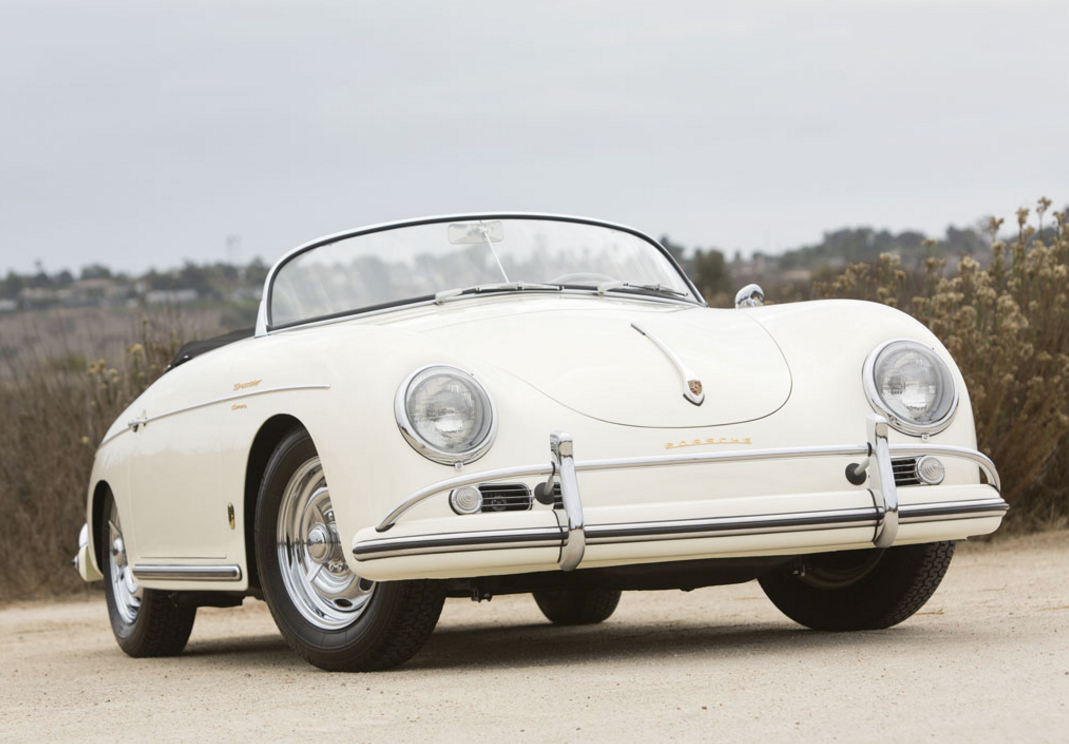
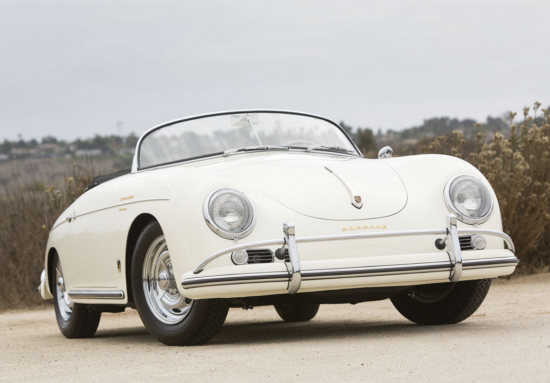
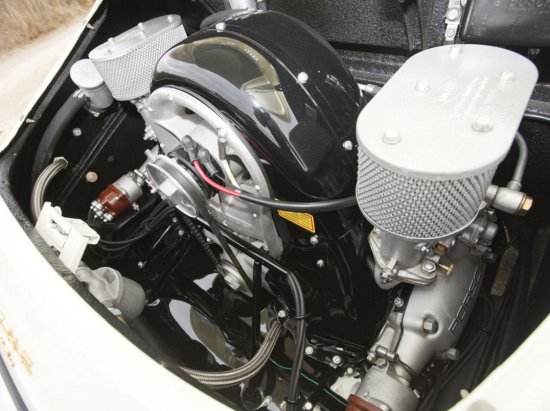
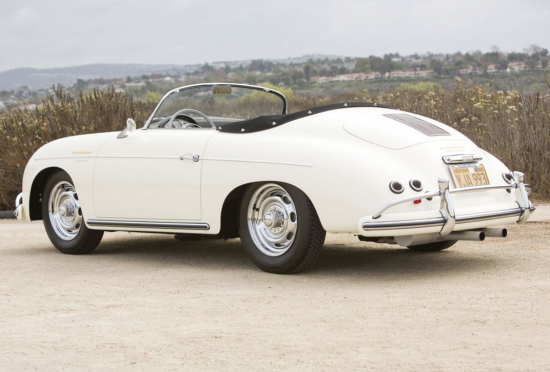
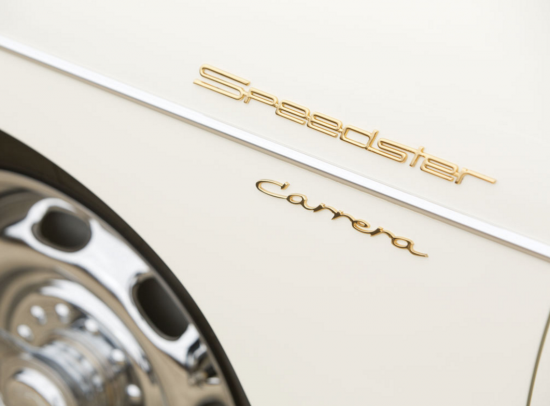
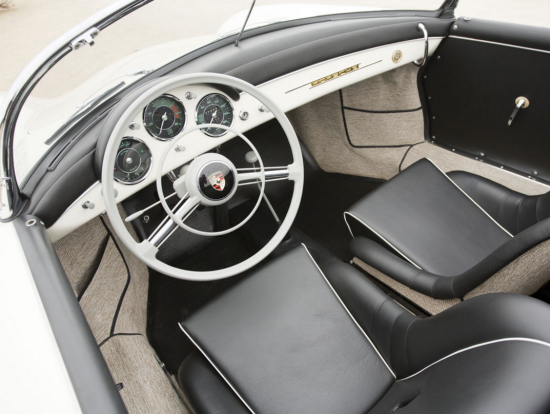
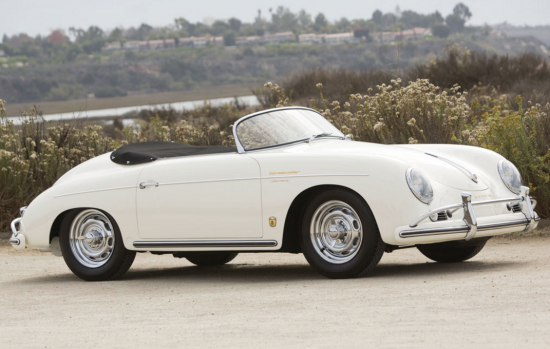
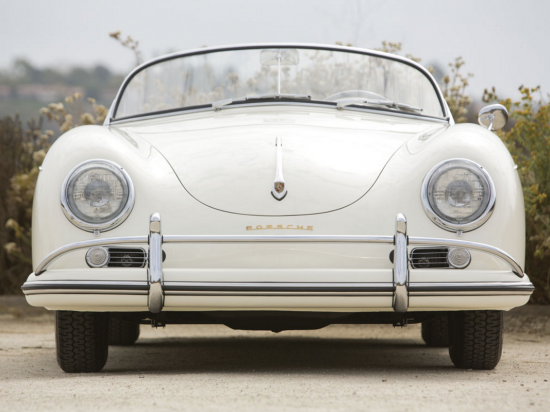
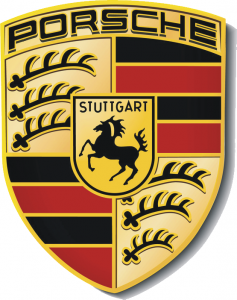
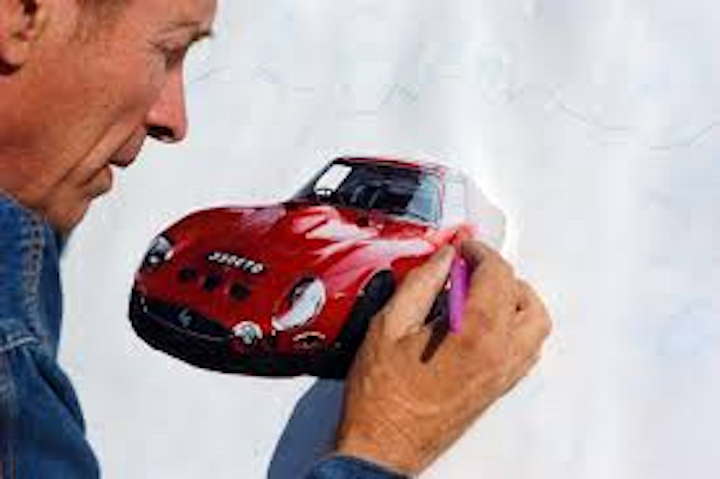

Great post! Thanks…